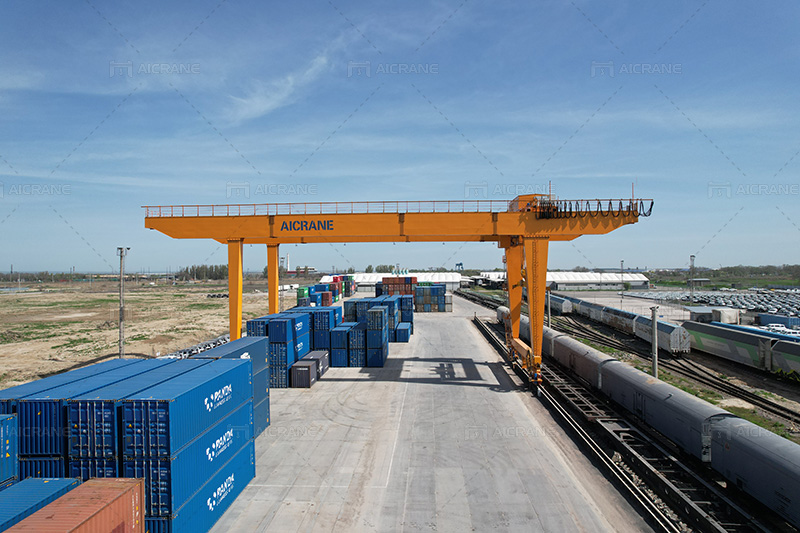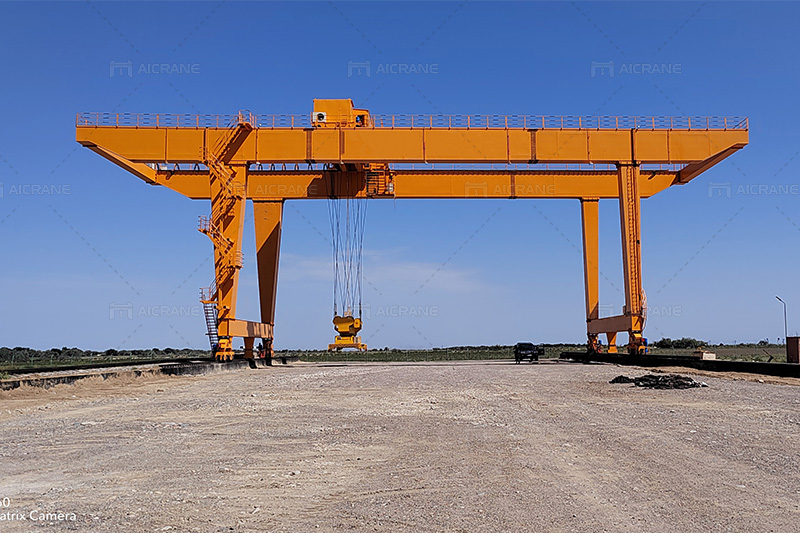In the intricate network of global trade, supply chain disruptions have a cascading effect on various industries. One sector significantly impacted is the manufacturing and pricing of rail-mounted gantry cranes (RMGs). These vital pieces of equipment are crucial for container handling at ports, rail yards, and logistics hubs worldwide. Understanding how global supply chain issues influence RMG crane prices requires a comprehensive look at several key factors: material availability, transportation logistics, labor shortages, and geopolitical events.

Material Availability
1. Steel and Raw Materials:
Steel is a fundamental component in the construction of RMG cranes. The global steel market is highly sensitive to fluctuations in supply and demand. When supply chain issues arise, such as those experienced during the COVID-19 pandemic, steel production can be significantly hampered. For instance, lockdowns and reduced workforce availability led to decreased production in major steel-producing countries like China and India.
These disruptions cause raw material prices to spike. For RMG crane manufacturers, the increased cost of steel directly translates to higher production costs, which are then passed on to consumers. Additionally, shortages in other essential materials such as electronic components, hydraulic systems, and specialized alloys exacerbate the situation, further driving up prices.
2. Supply Chain Bottlenecks:
Delays in the supply chain can lead to bottlenecks where critical components are unavailable when needed. This not only slows down production but can also increase the cost of sourcing alternative suppliers at short notice. The just-in-time inventory approach, widely adopted for its cost-saving benefits, becomes a liability when supply chains are disrupted, leading to increased storage and transportation costs for rail mounted gantry crane manufacturers.
Transportation Logistics
1. Freight Costs:
The global shipping industry plays a pivotal role in transporting the raw materials and finished products needed for RMG crane production. Supply chain disruptions often result in skyrocketing freight costs. The COVID-19 pandemic, for instance, saw container shipping prices surge due to port closures, reduced shipping schedules, and a shortage of containers.
High freight costs impact every stage of the RMG crane manufacturing process. From sourcing raw materials to delivering finished cranes to clients, the increased transportation expenses contribute to the overall rise in prices. Manufacturers are often forced to absorb these costs initially, but they eventually pass them on to customers.
2. Port Congestion:
Port congestion is another significant issue affecting transportation logistics. When ports are congested, the unloading and loading of cargo are delayed, leading to longer lead times and increased holding costs for manufacturers. For RMG container cranes, which are large and require specialized shipping arrangements, port congestion can lead to substantial delays and cost overruns.

Labor Shortages
1. Skilled Labor:
The manufacturing of RMG cranes requires skilled labor for various stages, including design, fabrication, assembly, and testing. Labor shortages, often exacerbated by supply chain disruptions, can lead to delays in production schedules. The COVID-19 pandemic highlighted how susceptible the labor market is to such disruptions, with many workers falling ill or being unable to work due to lockdowns and travel restrictions.
Labor shortages not only delay production but also increase labor costs. Manufacturers may need to offer higher wages to attract skilled workers or pay overtime to meet production deadlines. These increased labor costs inevitably contribute to higher RMG crane prices.
2. Training and Safety:
Ensuring that labor is adequately trained and that safety standards are met is critical in RMG crane manufacturing. Supply chain disruptions can impact the availability of training programs and safety equipment. This can result in increased costs related to compliance and the need to implement additional safety measures, further driving up the overall cost of production.
Geopolitical Events
1. Trade Policies and Tariffs:
Geopolitical events, such as trade wars and changes in international trade policies, have a direct impact on the supply chain. Tariffs and trade restrictions can increase the cost of importing raw materials and components necessary for RMG crane production. For example, the trade tensions between the United States and China led to the imposition of tariffs on steel and electronic components, significantly affecting the cost structure for manufacturers.
2. Political Instability:
Political instability in key supplier regions can disrupt the supply of essential materials. For instance, political unrest in countries rich in rare earth minerals or specialized manufacturing capabilities can lead to sudden shortages and price spikes. Manufacturers relying on these regions for critical components face increased costs and uncertainties, which are then reflected in the final pricing of RMG cranes.
Mitigation Strategies
1. Diversifying Suppliers:
To mitigate the impact of supply chain disruptions, gantry crane manufacturers are increasingly looking to diversify their supplier base. By sourcing materials and components from multiple regions, they can reduce their dependency on any single supplier or country. This strategy can help stabilize costs and ensure a more reliable supply chain, although it may require significant upfront investment and logistical adjustments.
2. Investing in Technology:
Advanced technologies, such as predictive analytics and blockchain, are being adopted to enhance supply chain visibility and resilience. Predictive analytics can help manufacturers anticipate potential disruptions and adjust their supply chain strategies proactively. Blockchain technology, on the other hand, can provide a transparent and secure way to track the movement of materials and components, ensuring authenticity and reducing the risk of counterfeits.
3. Building Strategic Reserves:
Some manufacturers are also considering the establishment of strategic reserves of critical materials and components. By maintaining a buffer stock, they can continue production even during supply chain disruptions. This approach, however, requires careful management to avoid excessive inventory costs and potential obsolescence.
Conclusion
Global supply chain issues have a profound impact on the pricing of rail-mounted gantry cranes. From material shortages and transportation challenges to labor constraints and geopolitical events, the factors contributing to price increases are multifaceted and interconnected. As the world continues to navigate the complexities of global trade, lifting solution provider must adopt innovative strategies to mitigate these challenges and ensure the stability of their supply chains. By diversifying suppliers, investing in technology, and building strategic reserves, they can better manage costs and deliver reliable products to their customers, despite the ongoing supply chain uncertainties.